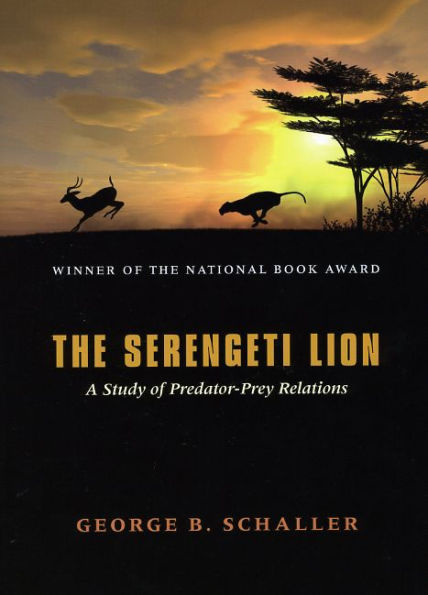Based on three years of study in the Serengeti National Park, George B. Schaller's The Serengeti Lion describes the vast impact of the lion and other predators on the vast herds of wildebeest, zebra, and gazelle for which the area is famous. The most comprehensive book available on the lion, this classic work includes the author's findings on all aspects of lion behavior, including its social system, population dynamics, hunting behavior, and predation patterns.
"If you have only enough time to read one book about field biology, this is the one I recommend."-Edward O. Wilson, Science
"This book conveys not only the fascination of its particular study of lion behavior but the drama and wonder and beauty of the intimate interdependence of all living things."-Saturday Review
"This is an important book, not just for its valuable information on lions, but for its broad, open, and intelligent approach to problems that cut across the fields of behavior, populations, ecology, wildlife management, evolution, anthropology, and comparative biology."-Richard G. Van Gelder, Bioscience
Based on three years of study in the Serengeti National Park, George B. Schaller's The Serengeti Lion describes the vast impact of the lion and other predators on the vast herds of wildebeest, zebra, and gazelle for which the area is famous. The most comprehensive book available on the lion, this classic work includes the author's findings on all aspects of lion behavior, including its social system, population dynamics, hunting behavior, and predation patterns.
"If you have only enough time to read one book about field biology, this is the one I recommend."-Edward O. Wilson, Science
"This book conveys not only the fascination of its particular study of lion behavior but the drama and wonder and beauty of the intimate interdependence of all living things."-Saturday Review
"This is an important book, not just for its valuable information on lions, but for its broad, open, and intelligent approach to problems that cut across the fields of behavior, populations, ecology, wildlife management, evolution, anthropology, and comparative biology."-Richard G. Van Gelder, Bioscience

The Serengeti Lion: A Study of Predator-Prey Relations
504
The Serengeti Lion: A Study of Predator-Prey Relations
504Paperback(1)

Product Details
| ISBN-13: | 9780226736402 |
|---|---|
| Publisher: | University of Chicago Press |
| Publication date: | 03/15/1976 |
| Series: | Wildlife Behavior and Ecology series |
| Edition description: | 1 |
| Pages: | 504 |
| Product dimensions: | 6.75(w) x 9.50(h) x 1.10(d) |
